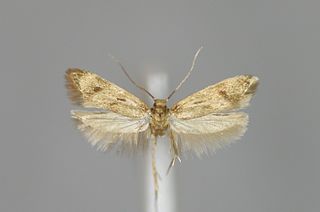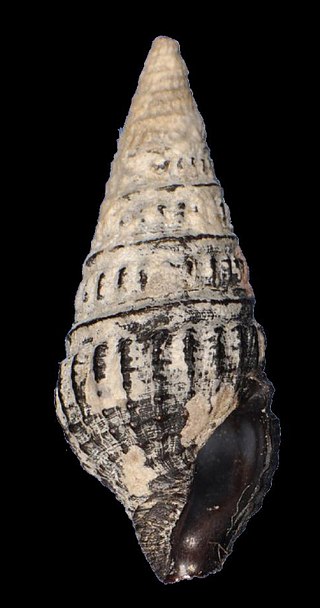
The Rubiaceae are a family of flowering plants, commonly known as the coffee, madder, or bedstraw family. It consists of terrestrial trees, shrubs, lianas, or herbs that are recognizable by simple, opposite leaves with interpetiolar stipules and sympetalous actinomorphic flowers. The family contains about 13,500 species in about 620 genera, which makes it the fourth-largest angiosperm family. Rubiaceae has a cosmopolitan distribution; however, the largest species diversity is concentrated in the tropics and subtropics. Economically important genera include Coffea, the source of coffee, Cinchona, the source of the antimalarial alkaloid quinine, ornamental cultivars, and historically some dye plants.

The veery is a small North American thrush species, a member of a group of closely related and similar species in the genus Catharus, also including the gray-cheeked thrush, Bicknell's thrush, Swainson's thrush, and hermit thrush. Alternate names for this species include Wilson's thrush and tawny thrush. Up to six subspecies exist, which are grouped into the eastern veery, the western veery or willow thrush, and the Newfoundland veery.

Coelogyne is a genus of 594 species, which are sympodial epiphytes from the family Orchidaceae, distributed across India, China, Indonesia and the Fiji islands, with the main centers in Borneo, Sumatra and the Himalayas. They can be found from tropical lowland forests to montane rainforests. A few species grow as terrestrials or even as lithophytes in open, humid habitats. The genera BolborchisLindl., HologynePfitzer and PtychogynePfitzer are generally included here. The genus is abbreviated Coel. in trade journals.

The cardinal woodpecker is a widespread and common resident breeder in much of sub-Saharan Africa. It occurs in a wide range of habitats, ranging from dense forest to thorn bush. It is fairly vocal and is easily identified by its call notes. The sexes are distinguishable by their head patterns.

Canthium is a genus of flowering plants in the family Rubiaceae. They are shrubs and small trees. The leaves are deciduous and the stems are usually thorny.

The Pacific sea nettle, or West Coast sea nettle, is a widespread planktonic scyphozoan cnidarian—or medusa, “jellyfish” or “jelly”—that lives in the northeastern Pacific Ocean, in temperate to cooler waters off of British Columbia and the West Coast of the United States, ranging south to México. The Pacific sea nettle earned its common name in-reference to its defensive, ‘nettle’-like sting; much like the stinging nettle plant, the sea nettle’s defensive sting is often irritating to humans, though rarely dangerous.

Borkhausenia fuscescens is a moth of the family Oecophoridae. It is found in Europe.

Thumatha is a genus of moths in the family Erebidae. The genus was erected by Francis Walker in 1866. Species are distributed in the Oriental and Australian regions.

Nishi-ku is one of seven wards of Hamamatsu, Shizuoka, Japan, located in the southwest corner of the city. It is bordered by Naka-ku, Kita-ku, Minami-ku, and the city of Kosai. The 3rd largest ward of Hamamatsu in terms of area, much of the ward is still rural, with farms and rice fields.

Vanguerieae is a tribe of flowering plants in the family Rubiaceae and contains about 655 species in 30 genera. It is one of the most species-rich groups within the family and it is distributed across the Paleotropics.

Crassispira fuscescens is a species of sea snail, a marine gastropod mollusk in the family Pseudomelatomidae.

Thumatha fuscescens is a moth of the family Erebidae first described by Francis Walker in 1866. It is found in Australia, South-East Asia, India, Sri Lanka, the Comoros, Réunion, Madagascar, and Gabon.

Bolboceratidae is a family of beetle. It was historically treated as a subfamily of the earth-boring dung beetles, or "dor beetles", but has been considered a separate family by many authors since 1995. Some recent classifications have persisted in treating bolboceratids as a subfamily (e.g.) but these classifications are contradicted by recent phylogenetic studies of relationships indicating that bolboceratids are not closely related to geotrupids.

Ixoroideae is a subfamily of flowering plants in the family Rubiaceae and contains about 4000 species in 27 tribes.

Coptosapelta is a genus of flowering plants in the family Rubiaceae. It is found in tropical and subtropical Asia. The genus has not been placed within a subfamily and is sister to the rest of Rubiaceae.

NGC102 is a lenticular galaxy estimated to be about 330 million light-years away in the constellation of Cetus. It was discovered by Francis Leavenworth in 1886 and its apparent magnitude is 14.
C.E.P. Mundo de Alegría is a Peruvian international school in Nishi-ku, Hamamatsu, Japan. The school, which has primary and secondary levels, uses Spanish as the medium of instruction. In 2013 the Embassy of Peru celebrated the school's 10 year anniversary.

Dr. Charlotte M. Taylor is a botanist and professor specialising in taxonomy and conservation. She works with the large plant family Rubiaceae, particularly found in the American tropics and in the tribes Palicoureeae and Psychotrieae. This plant family is an economically important group, as it includes plant species used to make coffee and quinine. Taylor also conducts work related to the floristics of Rubiaceae and morphological radiations of the group. Taylor has collected plant samples from many countries across the globe, including Chile, Colombia, Costa Rica, Panama, and the United States of America, and has named many new species known to science from these regions. As of 2023, Taylor has authored 500 land plant species' names, the third-highest number of such names authored by any female scientist.

SMM-J2135-0102 is a galaxy discovered using the Large Apex Bolometer Camera (LABOCA) of the Atacama Pathfinder Experiment (APEX) telescope.

Siganus fuscescens, the mottled spinefoot, black rabbitfish, black spinefoot, dusky rabbitfish, fuscous rabbitfish, happy moments, mi mi, pearl-spotted spinefoot, pin-spotted spinefoot, stinging bream or West Australian rabbitfish, is a species of marine ray-finned fish, a rabbitfish belonging to the family Siganidae. It is found in the Western Pacific Ocean.

















